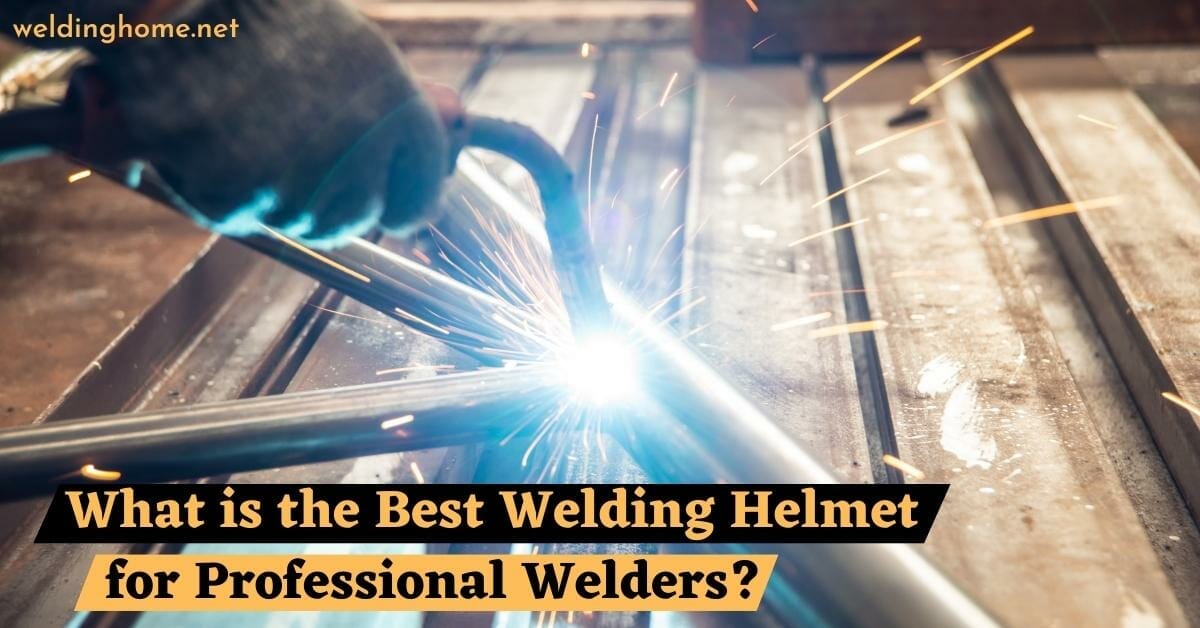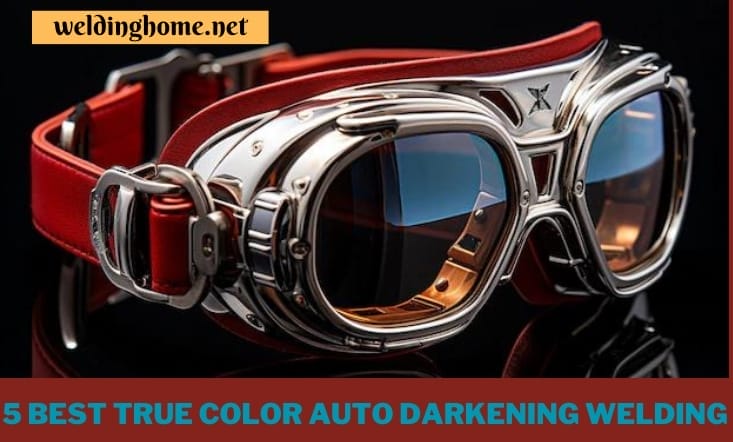What is the Best Welding Helmet for Professional Welders In 2024

What is the Best Welding Helmet for Professional Welders? When selecting the best welding helmet for professional welders, it is important to consider several factors that will help ensure your safety, comfort, and quality of work.
Which welding helmet is recommended for professional welders? The main consideration is the level of protection needed from the helmet. Your helmet should be able to protect your eyes from the intense brightness, infrared, and ultraviolet radiation that is produced during welding. The helmet should also be capable of protecting you from sparks and other flying debris. Look for helmets that have a suitable shading range to help protect your eyes from the intense light created during welding.
When choosing the best welding helmet for professional welders, it is important to consider comfort and fit. You should choose helmets that have adjustable straps and padding so that they fit securely on your head.
The helmet should not be too heavy or bulky, as this can cause neck strain and fatigue.
1. Introducing the different types of welding helmets & how they work
The most common types of welding helmets are passive, auto-darkening, and powered air-purifying respirator (PAPR) helmets. Passive helmets usually provide basic protection from sparks and debris but are not suitable for more intense welding tasks due to their lack of a variable shade range.
Auto-darkening helmets offer more protection, as they can be adjusted to different shades in order to protect the welder’s eyes adequately. Finally, PAPR helmets use a battery-powered fan to circulate filtered air around the welder’s face, providing additional protection from fumes and other airborne particles.
2. Choosing between a fixed or variable shade
Professional welders need to exercise caution when a welding helmet, as some helmets may not have the right level of eye protection When choosing a welding helmet, it is important to consider the type of work you will be doing and select a suitable shade range accordingly.
If you are working with higher amperages, you should opt for a helmet with a variable shade range, as this will allow you to adjust the darkness of the lens depending on the intensity of the light. On the other hand, a fixed shade helmet may be more suitable for lower amperage welding tasks.
Auto-darkening
helmets are highly recommended for professional welders, as they offer the most protection and convenience.
passive lens helmets
Auto-darkening helmets
When it comes to selecting the best welding helmet for professional welders, there are two types of helmets available: passive lens and auto-darkening.
A passive lens helmet is a traditional design that does not automatically adjust the darkness of its filter in response to the brightness of an arc. It requires the welder to manually adjust the shade of the filter according to the welding task. They are typically cheaper and offer more protection against UV radiation, but require frequent adjustments and can be inconvenient for tasks that involve welding in multiple positions or settings.
An auto-darkening helmet is a modern design that has an electronic system that automatically adjusts the darkness of its filter in response to the brightness of an arc. They are more expensive than passive lens helmets but offer convenience and protection, as they can switch from light to dark almost instantaneously. Additionally, they provide a wider range of shade settings which allow welders to adjust their helmet settings for different welding tasks with precision.
3. Other features to consider when selecting the best Welding Helmet for Professional Welders
When choosing a welding helmet for professional use, there are other important features you should take into account. Look for helmets that have features such as auto on/off, grind mode, adjustable headgear, and side windows for improved vision. Additionally, you should make sure that the helmet is comfortable to wear for long periods and provides adequate coverage for your face and neck.
4. Discussing various features of welding helmets
When choosing the best welding helmet for professional welders, it is important to look at the different features available. Look for helmets that have an adjustable headband and adjustable lens shades, as these features will help you to customize your helmet for the most comfortable fit. Additionally, look for helmets that offer additional features such as a sweatband or face shield to keep you cool and protected from flying debris.
To make a wise purchase, one should take into account the helmet cost.
Look for helmets that meet your requirements and are within your budget. There are numerous factors to consider when choosing the best welding helmet for professional welders. Safety and comfort should be your top priorities as these are integral to a secure and successful welding experience.
What are the main factors to consider when choosing a welding helmet?
Lens type, level of comfort, and level of protection.
b. Adjustable straps and padding
c. Adequate shade range
d. Additional features
e. What is the cost of finding the best welding helmet for my needs?
With the right helmet, professional welders can rest assured that they are protected and comfortable while completing their projects.
1.1 Discussing tips for long-term maintenance and care of your welding helmet
Proper maintenance and care of your welding helmet are essential to ensure its longevity. Be sure to inspect your helmet regularly for any damage or wear-and-tear that may have occurred over time. If you notice any issues, be sure to replace the parts or purchase a new helmet as soon as possible.
Additionally, it is important to keep the lens of your helmet clean and free from debris, as this will help ensure clear visibility when welding. To keep your welding helmet in good condition for a long time, remember to store it in a cool and dry location to avoid any harm or corrosion caused by heat or moisture. By following these guidelines, you can ensure that your welding helmet stays in good shape.
1.2 Exploring additional safety gear to consider while working with a welding helmet
While a welding helmet is essential for protecting yourself while working, you should also consider additional safety gear such as a flame-resistant jacket, leather gloves, and safety glasses. This will help ensure that you are fully protected from any potential hazards while completing your welding projects.
Before starting any welding project, make sure to learn and follow proper safety procedures.t. Following safety protocols, such as wearing the correct protective equipment and keeping your workspace organized, will reduce the risk of accidents or injuries while working.
1.3 Summarizing the key points of selecting the best welding helmet for professional welders
When selecting the best welding helmet for professional welders, it is important to consider factors such as lens type and protection level, adjustable straps, adequate shade range, additional features, and cost.
Additionally, proper maintenance and care as well as additional safety gear should be taken into consideration to ensure the utmost protection while welding. Following these tips will help professional welders thanks for taking the time to read this article! Remember to stay safe while welding and keep a positive attitude.y safe while completing their projects. End of Content. Thank
Which is better, fiberglass or polycarbonate helmet?
The choice between a fiberglass and polycarbonate helmet depends on the type of welding you are doing, as well as your personal preferences. Fiberglass helmets tend to be heavier than polycarbonate helmets but offer more protection from heat and provide better visibility when working in low-light conditions.
Polycarbonate helmets are both lighter and more flexible.
This feature enhances the comfort level of wearing them. They are also more resistant to damage from debris or impact and offer a wider range of shade settings for welding in different light conditions. Your individual needs and preferences will determine the best choice for you in the end. Consider all the factors involved before deciding which type of helmet is right for you. Thank you
In terms of cost, fiberglass helmets are typically more affordable than their polycarbonate counterparts. However, fiberglass helmets do not provide the same level of protection as polycarbonate helmetsThe choice of the best welding helmet for professional welders will ultimately vary based on their specific requirements and financial constraints.
Conclusion
Professional welders need to take into account multiple factors before choosing the optimal welding helmet.
It is important to consider details such as lens type and protection level, adjustable straps, adequate shade range, additional features, and cost to find the best helmet for your needs. Additionally, it is important to follow proper maintenance and care guidelines as well as wear additional safety gear while welding to ensure your utmost protection. With the right equipment and knowledge of safety protocols, professional welders can be confident that they are taking the necessary precautions to stay safe while working.
Thank you for reading this article, we hope it has helped you in selecting the best welding helmet for your profession!
Please note: The above content is solely for informational purposes and should not replace professional advice from a certified welding technician or a safety specialist. It is important to always follow safety protocols, wear proper protective equipment, and consult with an expert for any additional questions or concerns.
FAQ’S
How much is a good welding helmet?
Some welding helmets can cost as little as $45 while others can cost nearly $3,000. The amount you should spend depends on what features are important to you. Welding helmet prices depend on their construction, whether they are auto-darkening or passive shade, and any other optional features.
What helmets do welders wear?
Auto-Darkening Welding Helmets
These are the most popular types of welding helmets. They provide the welder with constant protection from the harmful rays of the welding arc. The lens on an auto-darkening welding helmet darkens automatically when exposed to the welding arc.
What welding lens is best?
Enter welding protection glass. Both the green lens and gold-coated lens offer optimal protection from welding-related radiation, ensuring your safety as well as continued eye health.






